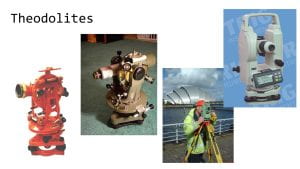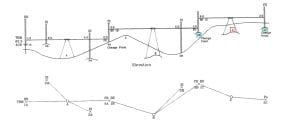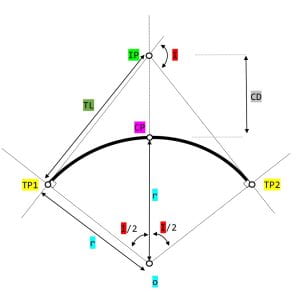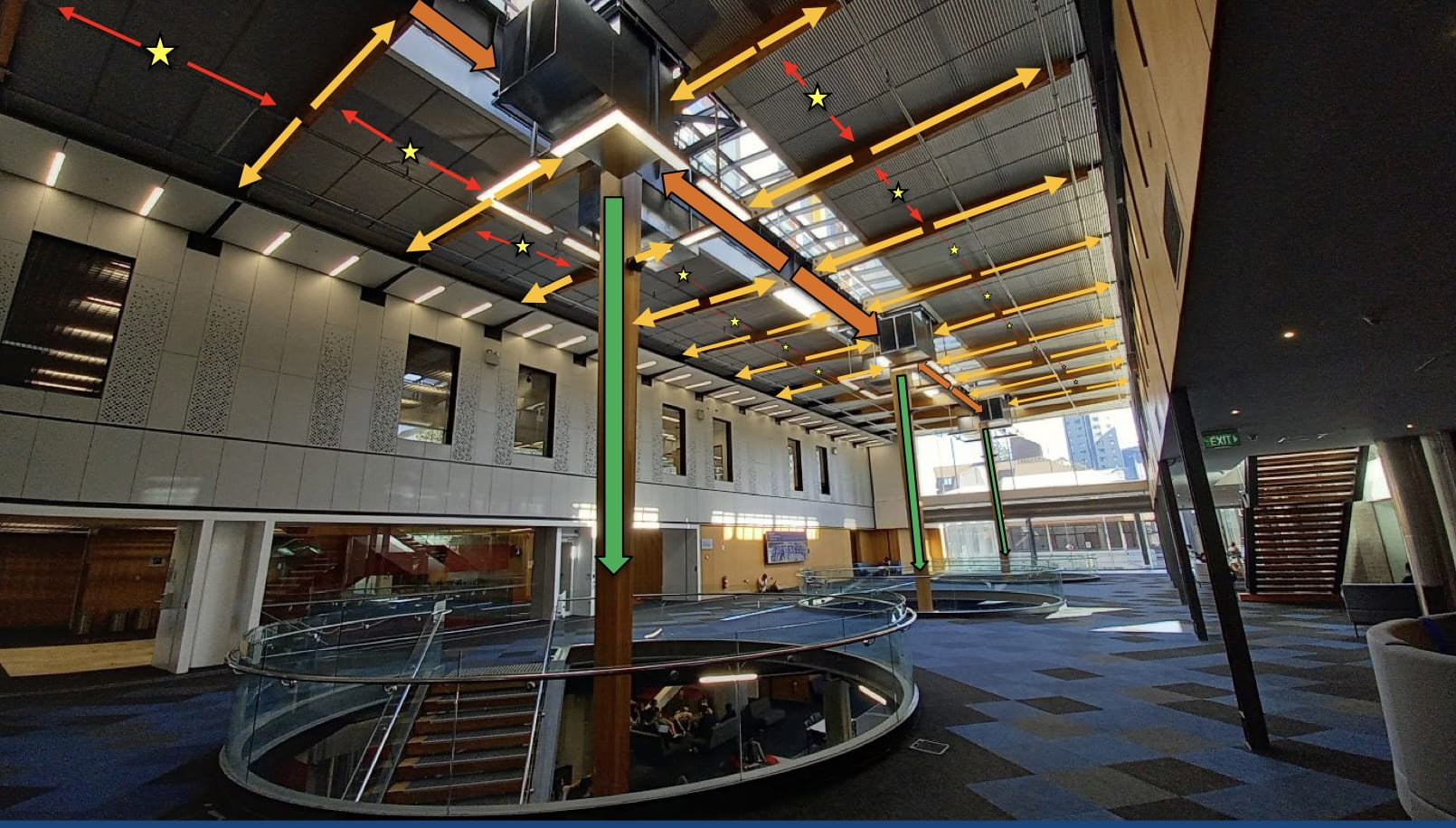A wise man once said, “If you squeeze information in, you squeeze your audience out”. So here’s a “concise” blog about roughly what we learned in each course in the first semester.
CIVIL 203 – The half survey and half transport course
The first half of the semester was solely dedicated to geomatics, i.e. surveying. We were introduced to this bad boy:

and used it to measure the horizontal and vertical angles between things. We learned how to calculate the bearings, angles and level changes between different points:

and uh… this:

I know it looked scary, but it was actually not that bad. You’ll learn what those letters mean and how to calculate them. As you may have guessed, that involved a lot of geometry. Being able to visualise where things are relative to one another will definitely come in handy!
The second half of the course was about transport design. We learned a lot about road designs; transition curves (how bendy the road is), superelevation (the banking of the road), sight distance (how far you can see while travelling on the road) and much more! Pretty much what you’d expect from a course called transport design.
I found this course’s content to be reasonably straightforward. The coursework was very manageable and, to my surprise, quite enjoyable. In my opinion, this was the easiest course this year!
CIVIL 202 – The fluid mechanics course
The first few weeks of the course used familiar concepts from MM1, including dimensional analysis, vector and the good old integration and differentiation. We learned about the different approaches to analysing fluids (classification, dimensional analysis, physical modelling and similarity, integral and differential flow analysis, control volumes) as well as fluid properties (pressure, viscosity…etc).
The rest of the course focused on the actual mechanics of the fluid, you know… fluid mechanics. A lot of analysis was similar to those in statics last year but on water-related structures. Sum of forces, moments, conservation of mass and energy equations, that stuff. Ohh, and we were also introduced to the holy Bernoulli equation. Check out The Efficient Engineer video on this if you’d like to learn more (they have explanation videos relevant to concepts in other courses, too!).
The course’s workload was not too bad. However, some of the content required some thinking to understand. Your practice problem sheets will be your saviour in learning how to solve problems. As repetitive as this advice is, it is just as important: so do those practice problem sheets. Do those practice problem sheets. Do those practice problem sheets. Do th-
ENGSCI 211 – MM2
MM1 on steroids with some data/stats analysis using RStudios programme.
STRCTENG 200 – The first structural course (might be the most hated paper)
In the first half of the semester, we learned about structural forms (why structures are shaped the way they are), tributary area (how loads are transferred from roof to floor) and more of shear and bending moment diagrams with vertical structure elements. The content up to this point was very manageable. But then came the second half of the course.
This was the part where many of us, who previously struggled to decide between civil and structural, ceased to have that problem. From this point on, there were a lot of theories and formulas. Some of the concepts we learned about include section properties, bending stress, shear stress, I am so stressed, stress transformation, principal axes, deflection of beams and failure theories (to which I have a few of my own).
STRCTENG 200 was perhaps the most challenging course this year, especially towards the second half of the semester. There weren’t many assignments that “forced” us to revise throughout this course. As a result, I fell into complacency and a false sense of security. With the mean exam grade in the 50% range, it is safe to say that we were not ready for what was to come!
Semester one was a diverse and calculation-heavy semester with perhaps the easiest (The survey and transport course ) and most difficult course (the first structural) this year. Each course tackled different aspects of civil engineering and gave a feel of the various civil engineering subdisciplines (to which there are many, check out this past blog to learn more). Needless to say…
Anyways, one last tip! Consider joining CESA as they regularly host different student-related events that I found very beneficial! That’s all for me!
Update: After reading other bloggers’ posts, I just realised I forgot to introduce myself. Suppose you made it this far; hi! My name is (dino)Sor. I enjoy sewing rocks with sharp tapes and dotted eyeliner. Please feel free to reach out about anything at all! It does not have to be blog or even uni-related. You can find my Linkedin here. Like the stairs of your inner child’s imaginary treehouse, I’ll be rooting for you every step of the way. Okay I’ll go now. Bye!
